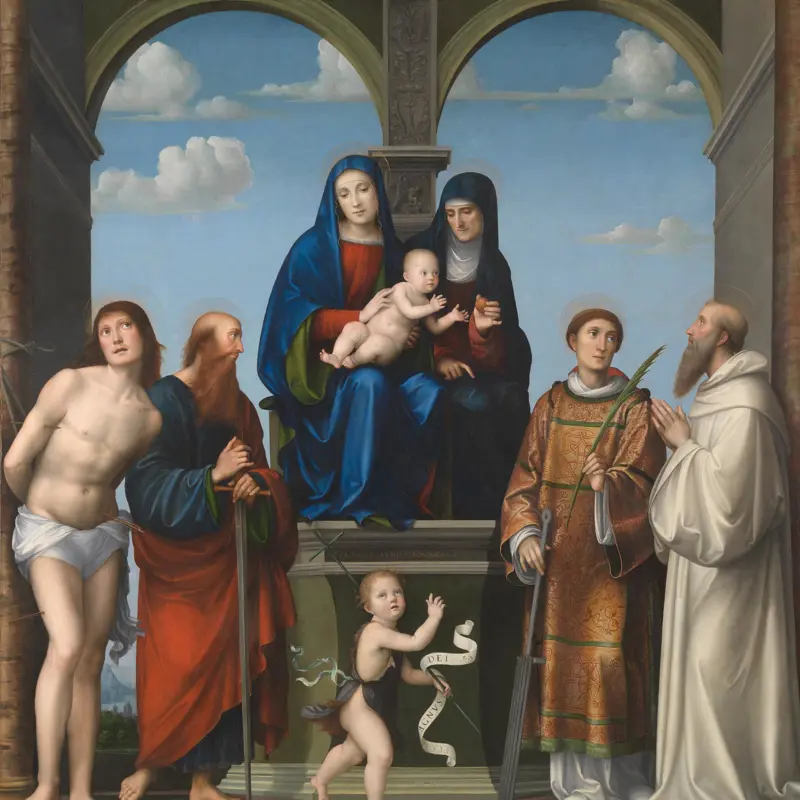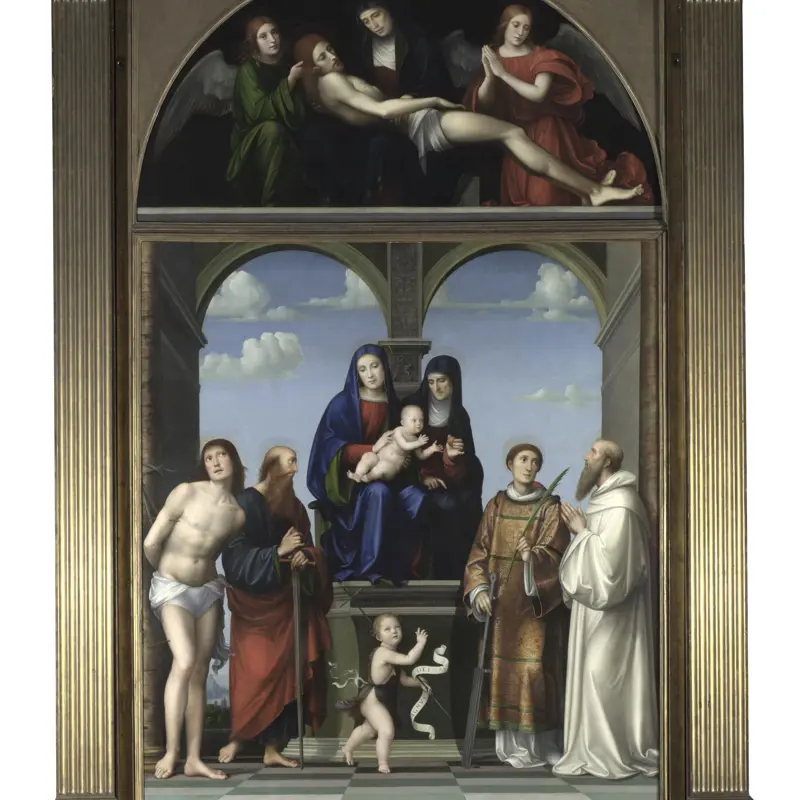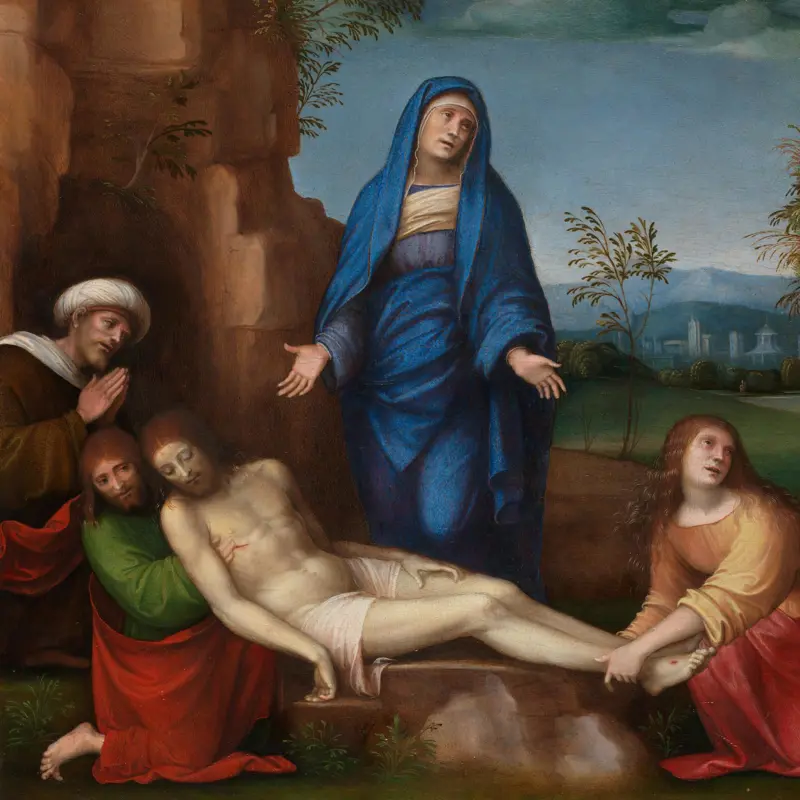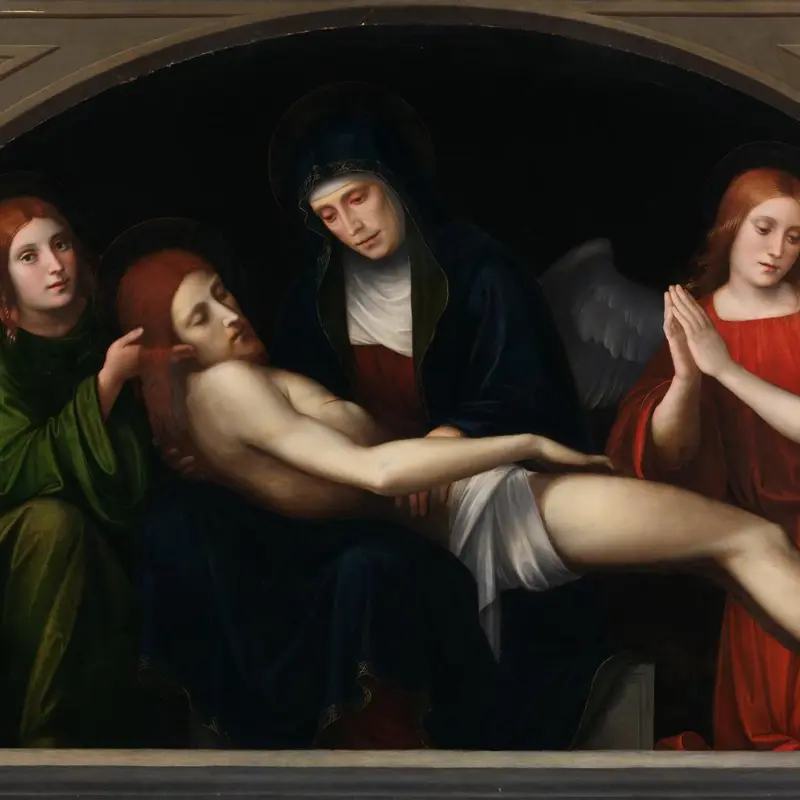Francesco Francia and workshop, 'The Virgin and Child with Two Saints', about 1500-5
About the work
Overview
The Virgin holds the naked infant Christ who stands on a stone ledge and raises his hand in blessing. We do not know the identity of the saints behind them, but the older one may be Saint Jerome or Saint Anthony Abbot.
The holy characters are portrayed in the Italian countryside, making them appear humble, approachable and down to earth. Setting the Virgin and Child in a landscape was a recent innovation in Italian art, popularised by the Venetian painter Giovanni Bellini.
Francia used his central image of the Virgin and Child several times for other compositions, changing the saints that accompany them. The Madonna and Child with Saints Sebastian and Anthony Abbot (Alte Pinakothek, Munich) is almost identical to the National Gallery’s picture. A full-sized drawing, or cartoon, would have been used to trace and transfer the design. The degree of copying suggests that Francia’s assistants may have been involved in painting these pictures.
Key facts
Details
- Full title
- The Virgin and Child with Two Saints
- Artist
- Francesco Francia and workshop
- Artist dates
- about 1447 - 1517
- Date made
- about 1500-5
- Medium and support
- oil, originally on wood, transferred to wood
- Dimensions
- 78.1 × 62.2 cm
- Acquisition credit
- Bought, 1860
- Inventory number
- NG638
- Location
- Not on display
- Collection
- Main Collection
- Frame
- 16th-century Italian Frame
Provenance
Additional information
Text extracted from the ‘Provenance’ section of the catalogue entry in Giorgia Mancini and Nicholas Penny, ‘National Gallery Catalogues: The Sixteenth Century Italian Paintings’, vol. 3, ‘Bologna and Ferrara’, London 2016; for further information, see the full catalogue entry.
Exhibition history
-
2017Degas: A Passion for Perfection.The Fitzwilliam Museum3 October 2017 - 14 January 2018
Bibliography
-
1951Davies, Martin, National Gallery Catalogues: The Earlier Italian Schools, London 1951
-
1986Davies, Martin, National Gallery Catalogues: The Earlier Italian Schools, revised edn, London 1986
-
2001
C. Baker and T. Henry, The National Gallery: Complete Illustrated Catalogue, London 2001
-
2016Mancini, Giorgia, and Nicholas Penny, National Gallery Catalogues: The Sixteenth Century Italian Paintings, 3, Bologna and Ferrara, London 2016
About this record
If you know more about this work or have spotted an error, please contact us. Please note that exhibition histories are listed from 2009 onwards. Bibliographies may not be complete; more comprehensive information is available in the National Gallery Library.






